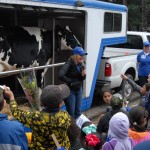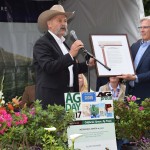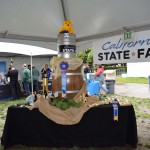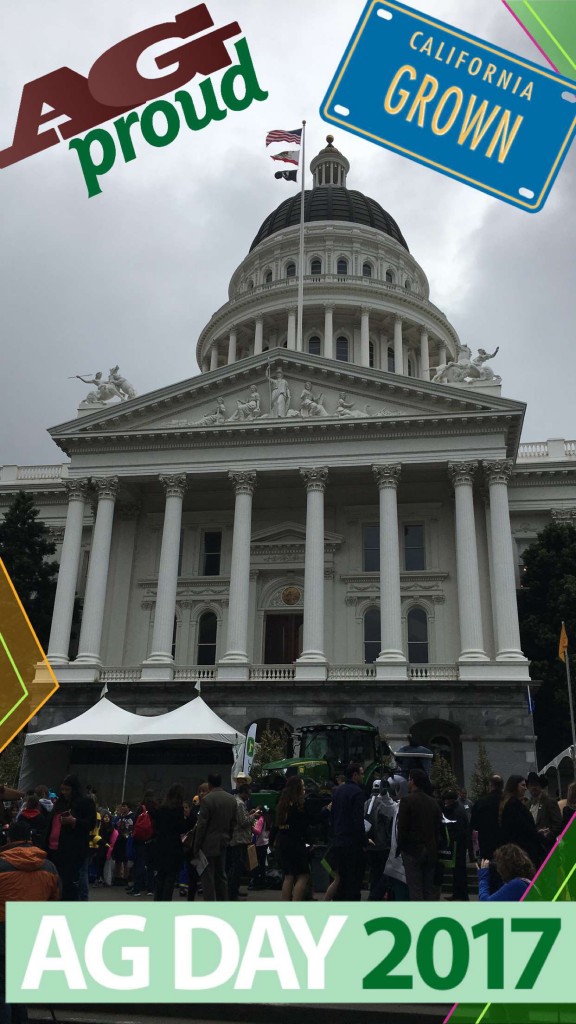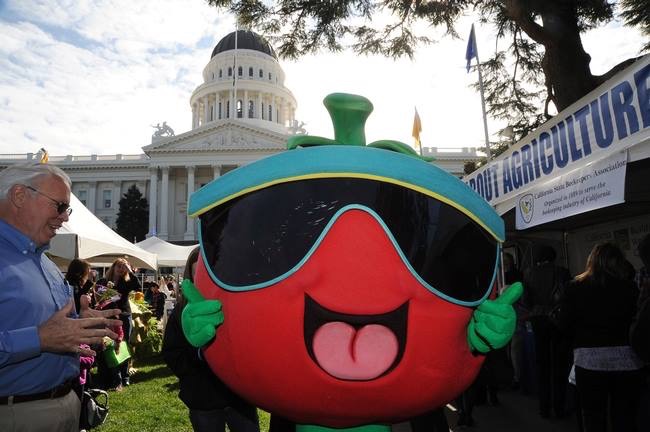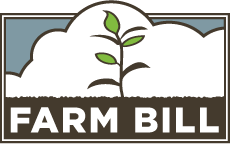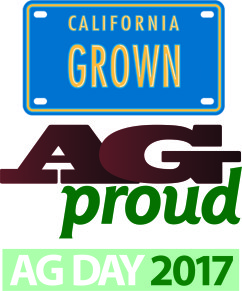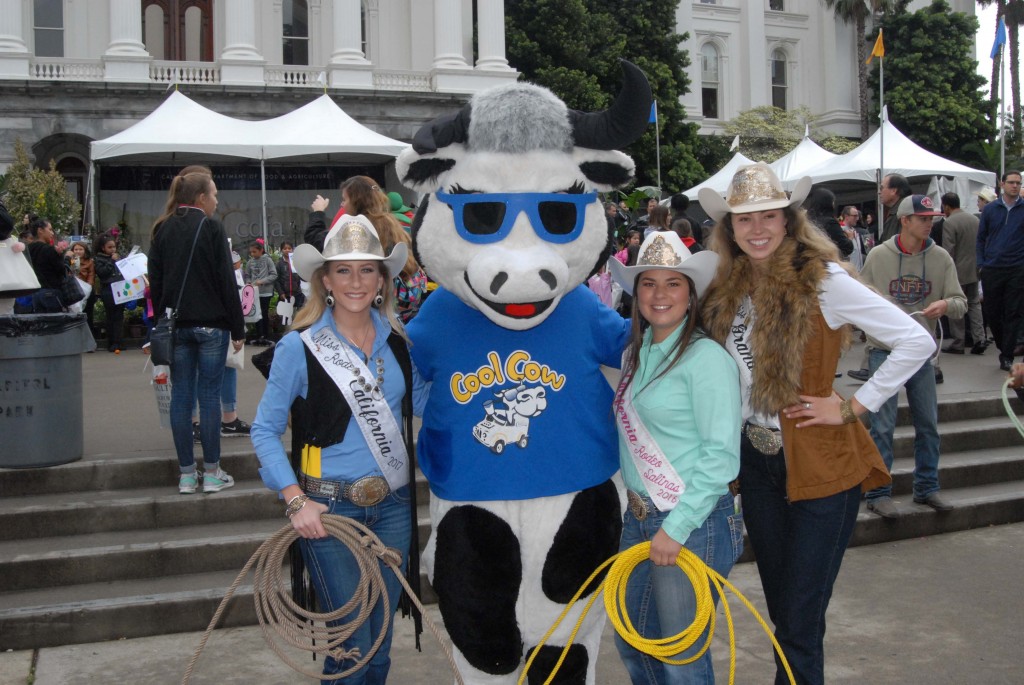
It just wouldn’t be Ag Day at the California Capitol without “Cool Cow” and our rodeo queens (from left): Brittney Phillips, Miss Rodeo California; Megan Ford, Miss California Rodeo Salinas; and Leandra Steenkamp, Miss Grand National Rodeo 2017.
- Ag Day emcee Rob Stewart, host of KVIE’s “Rob on the Road” program, kicks things off.
- California legislators braved the blustery weather and came out to enjoy Ag Day. From left: Assemblymember Cecilia Aguiar-Curry, Assembly Agriculture Committee Chair Anna Caballero, Senate Agriculture Committee Chair Cathleen Galgiani and Assemblymember Devon Mathis thanked Ag Day partners including California Women for Agriculture President Jeanette Lombardo, California Foundation for Agriculture in the Classroom Executive Director Judy Culbertson, and State Board of Food and Agriculture President Craig McNamara.
- Thanks to Rob Stewart of KVIE’s “Rob on the Road” for bringing his inimitable energy to Ag Day this year.
- California State Board of Food and Agriculture President Craig McNamara voiced his appreciation of the Golden State’s farmers and ranchers.
- Assemblymember Timothy Grayson with FFA members promoting the Cal Ag Plate license plate program supporting agricultural education programs.
- It’s not every day you get a roping lesson from a real rodeo queen! That’s Leandra Steenkamp, Miss Grand National Rodeo 2017.
- The “Blue Jackets” of FFA were everywhere at Ag Day – especially helping hand out flowers at the California State Floral Association booth.
- The California State Fair displays are a perennial Ag Day attraction.
- The California State Fair displays are a perennial Ag Day attraction.
- Myers, a highly trained detector dog with US Customs and Border Protection’s “Beagle Brigade,” is led through a demonstration by handler Danny Lee.
- Jamie Johansson, chairman of the board for the California Foundation for Agriculture in the Classroom, congratulates this year’s winning authors in the “Imagine this…” story writing competition.
- California Cattlemen’s Association President Dave Daley, Ph.D., accepts a proclamation honoring the organization’s 100th anniversary from California State Board of Food and Agriculture President Craig McNamara. The proclamation was signed by CDFA Secretary Karen Ross.
- Myers, a highly trained detector dog with US Customs and Border Protection’s “Beagle Brigade,” and handler Danny Lee greet Ag Day attendees.
- Kids carried signs reading “Fruits & Veggies for a Healthy Life!” as they participated in a health walk around the capitol building, starting with calisthenics right in the middle of Ag Day.
- The Calpaca (California Alpaca Breeders Association) booth was as popular as always.
- The California State Fair displays are a perennial Ag Day attraction.
Special thanks to Bob Laliberte and Robbie Chessey for their help with the photography this year.












